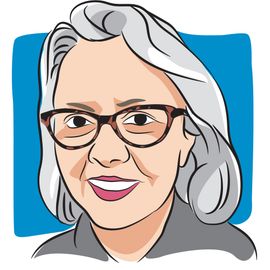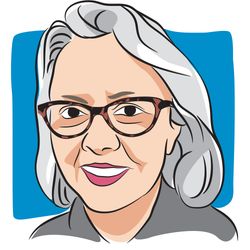- About
- Advertise / Support
- Contact
- CancerNetwork.com
- TargetedOnc.com
- OncLive.com
- OncNursingNews.com
- Terms & Conditions
- Privacy
- Do Not Sell My Information
© 2024 MJH Life Sciences™ and CURE - Oncology & Cancer News for Patients & Caregivers. All rights reserved.
Advice for Clinicians on Helping Survivors Through Mammograms

Felicia Mitchell, retired from college teaching, is a poet and writer who makes her home in southwestern Virginia. She is a survivor of stage 2b HER2-positive breast cancer diagnosed in 2010. Website: www.feliciamitchell.net
The annual mammogram can be triggering for survivors. They could use a little more TLC from the system during this annual ritual.
Technicians guiding us through mammograms are highly trained. I appreciate them. Clerks who greet us with paperwork? I appreciate them, too. But I have some suggestions for the infrastructure that informs screening clinics, because survivors showing up for their annual mammograms need tender loving care.
First, streamline reminders. Each annual check-up, my oncologist orders a scan for the next year. The scheduled procedure is entered into a centralized computer system, and I am good to go. Later, though, a letter arrives from the women’s center to remind me to schedule a mammogram ASAP. This year, I expressed concern and was assured that a computer generates letters to everybody.
If somebody has a mammogram scheduled, I suggest, set up a mass mailing protocol to target individuals without appointments. A reminder of an upcoming appointment may be more appropriate for the rest of us. A red alert about why a woman needs to get a mammogram, when one is on the books, is worrisome.
Second, rethink paperwork. Do we need to remind a clinic of what is already there in the files? An update could be useful, but past history is past history. This year, I had to fill out yet another form to reveal the same information in the files. Why repeat the gory details if they have not changed?
No, the mastectomy did not dematerialize. Yes, my deceased mother’s breast cancer is still a fact. My great aunts who died from breast cancer are still dead. My aunt is still dead, too. Time did not rewind and erase this history. Repeating my losses, sitting with a technician while she reads my words aloud to clarify, is unsettling as I anticipate a mammogram in the coming minutes. Maybe, I suggest, review records and ask what has changed since the previous mammogram or be gentler with the same old questions.
This time there was a new question on the form also repeated aloud by the technician after I indicated agreement on the form. Did I want a 3-D mammogram, which has a statistically stronger chance of finding invasive cancer, even if my insurance would not pay for it? What could I say? About to put my breast on the line, all I could say was, well, since I am a survivor of invasive cancer with a potential risk for recurrence, I guess so.
There is nothing like an emotional appeal to make us pay extra to feel a bit less worried about how a previous 2-D mammogram did not pick up the cancer until it was invasive. Suggestion? Find a way to make such a choice less daunting, and help us to understand why many insurance companies (it would appear) will not pay for the stronger scan for women who are higher risk. Perhaps cancer history could be part of the decision-making protocol.
Third, reconsider second-guessing doctors. My oncologist ordered a scan with history of the left breast. That is what I expected to receive. But the technician asked if I wanted a scan of the right area, too, as I prepared to step up to the X-ray machine. Looking at her expression, I tried to deduce the correct answer as I wondered what was going on. Could I get cancer in the cavern of my right chest? No assurances one way or the other came, only mental confusion about why somebody would question my oncologist’s orders. Did the women's center know something we did not know?
I got a 2-D scan of the right and both 2-D and 3-D of the left. Then, as the scans ended, before I could catch my breath, I was asked to sign a statement penciled in to show I had asked for the right scan. I had not asked for it, not exactly, but I signed. What could I have done differently? If you start to question a doctor’s orders with a woman sitting there by a daunting machine in a hospital gown, a woman like me will become anxious about her entire future and say “yes” to anything that seems to guarantee longevity.
Fourth, maybe everybody working in a women’s center could practice different facial expressions and role play how it is to work with survivors versus other visitors. Looking too concerned or almost forlorn when a woman like me is there for a scan does little to help with post-traumatic stress associated with follow-up mammography. Even if my medical history is concerning, and I clearly have only one breast, look for a silver lining. Survivors appreciate a smile or two.
My best advice? Do what it takes to prevent a survivor from leaving the scene of the mammogram thinking that she is a walking advertisement for timely mammograms. Let her leave feeling as if she has just finished a life-affirming ritual. I know I want to glide away, passing others waiting less unnerved by my asymmetry than thrilled by my smile. I want to feel like shouting, “Yay! I did it! Another year down!”
Related Content:



